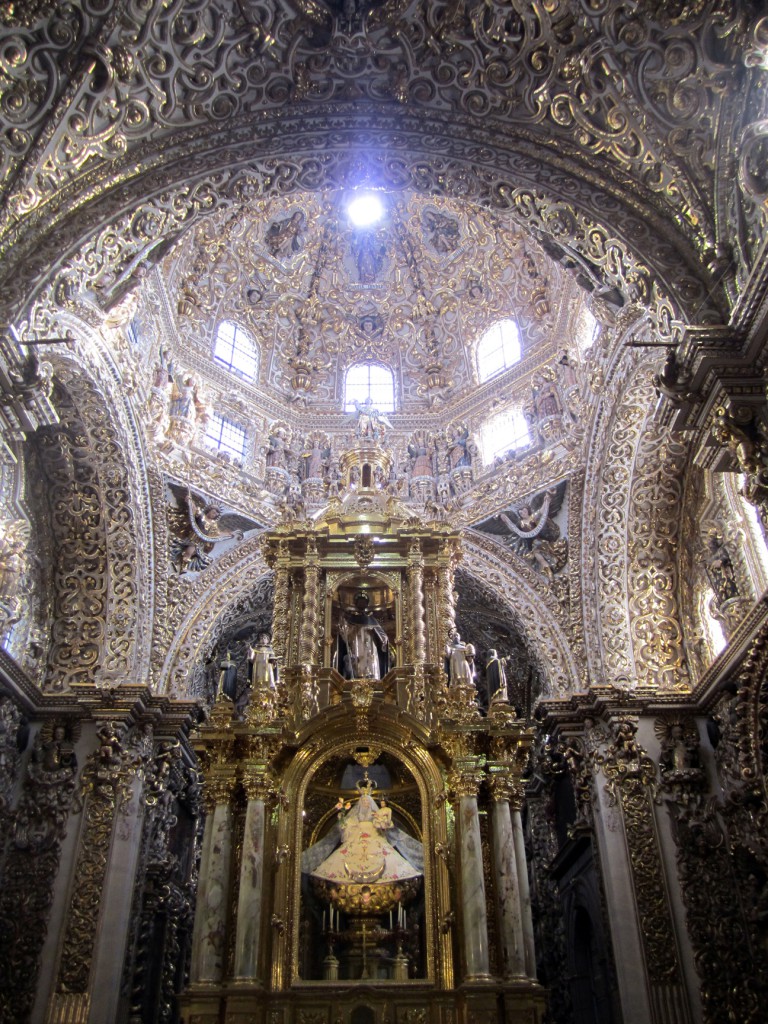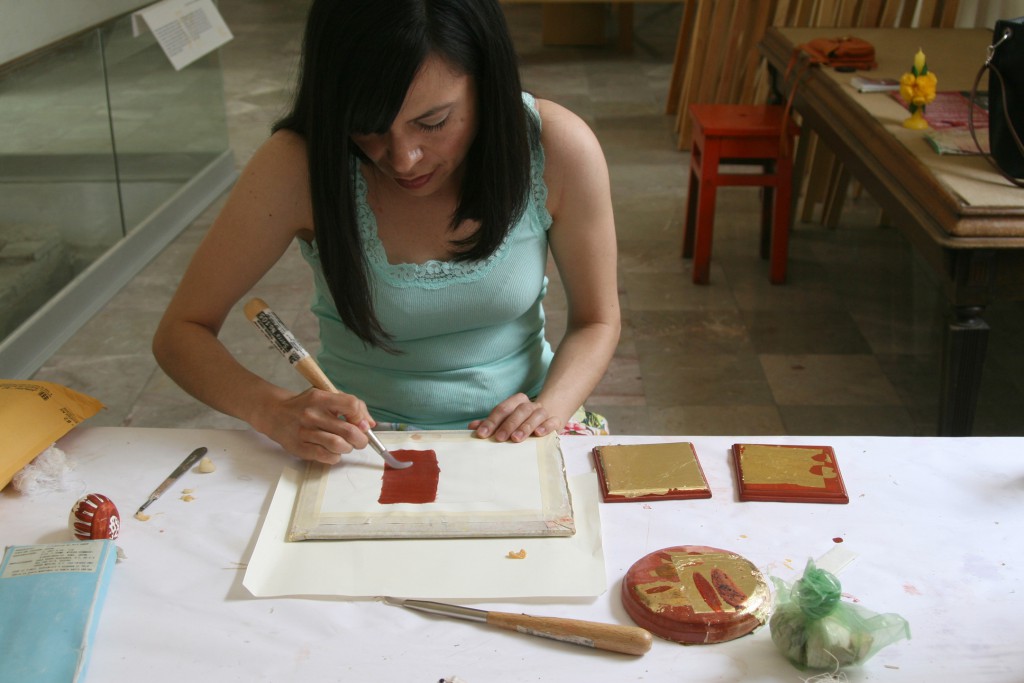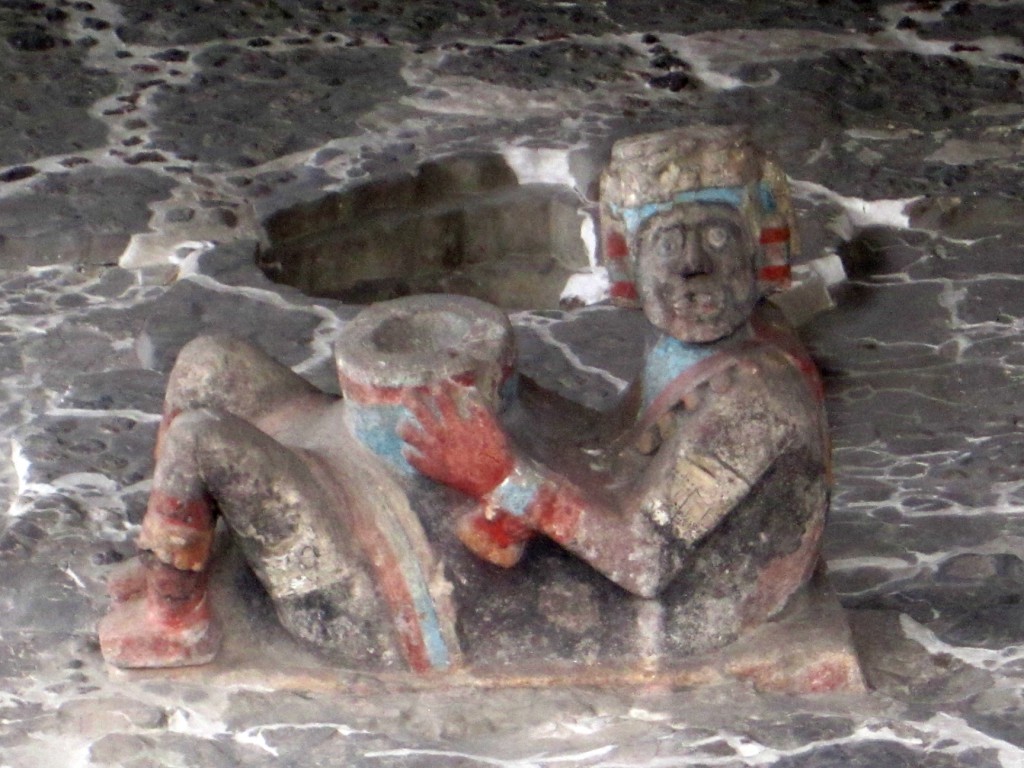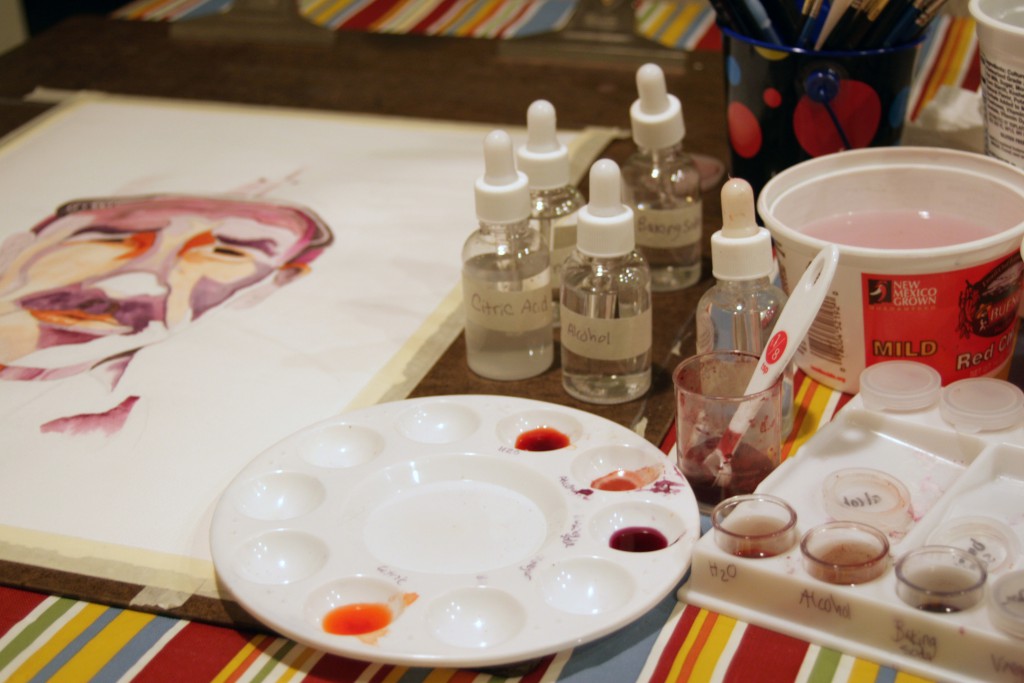
Capilla del Rosario inside the Templo Conventual de Santo Domingo de Guzmán, Puebla, Mexico.
Whether used in a slow, calculated, and detailed or fast, spontaneous, and crude way, oil paint as a material is completely forgiving—mistakes are easily wiped away, covered up, or worked over. For me, oils are comfortable and familiar and enable my visual descriptions of people, relationships, and narratives and the spaces and places that contain them. But comfort and familiarity are not always the best conditions for an artist, especially when reworking ideas is necessary in light of new revelations and for ongoing growth. How does experimentation with materials allow us to transform and combine materials and ideas into works of art? What questions arise when artists encounter new materials?
During the summer of 2014, I was fortunate to participate in an artist residency at Arquetopia in Puebla, Mexico, studying pre-Columbian and Baroque art techniques with a focus on materials, specifically gold leaf, pigments, and dyes. This experience allowed me to explore my interest in the conceptual underpinnings of certain materials and techniques—how and why they are chosen—and the physical properties and possible ideological and symbolic uses of such materials.
In Puebla, I visited the Capilla del Rosario in the Santo Domingo Church, a classic case of horror vacui, of Baroque style gone wild: Intricate patterns of gold meandered up, around, and across every surface of the chapel. Golden vegetal motifs spiraled into the visitors’ space, twisting, turning, and tangling with each other, escaping the flat surfaces of the walls and ceiling. The golden, light-filled space was otherworldly, dazzling. Back in my studio, on small wooden plaques, I laid down one layer of rabbit-skin glue and nine layers of calcium-carbonate paste, sanding after every three layers, then three layers of bole, a traditional reddish ground for gold leaf. I burnished the surface to a glossy finish. Working within a small margin of time, I captured a fragile sheet of gold leaf from the gilding cushion with a wide, flat gilder’s brush called a pestaña. I laid it gently onto the thin coat of gelatin atop the numerous layers.

Jocelyn Salaz burnishing the surface of bole on paper in preparation for gold leaf.
While I worked, I pondered: What does gold represent? Power? Devotion? Exploitation? Adoration? Value? Strength? What ideas are worthy of gold, and to whom and why? What imagery, concepts, subject matter, and objects necessitate the use of such a fragile and expensive material and labor-intensive process? In my studio in Puebla, simplified shapes and designs for gold leaf on objects replaced meticulously detailed oil paintings on panel.
Next, I attempted to untangle the colors red and purple. Red: life, blood, heart, inside, human, passion, love, sacrifice, rebirth. Purple: power, costly, royal, soul, deep, passion, dark, infinite, rich. In some churches, the figure of the crucified Christ was clothed in red velvet capes. In others, he wore deep purple robes. Sometimes his wounds were bright rubies of blood; sometimes they were splintered and bruised, purple wooden fingers. The differences between these two colors are subtle but meaningful. I could tease them out as I pondered the pre-Columbian chacmool figure at the Templo Mayor in Mexico City. Fully polychromed with red-iron oxides, the chacmool served as a repository for sacrificial offerings of human life.

Chacmool at the Templo Mayor, Mexico City, Mexico.
Perhaps my difficulty in untangling the meanings and symbolism of these colors comes from my experience with cochineal (cochinilla). This scale insect, from which the dye carmine is derived, thrives on cacti cultivated on farms mainly in Oaxaca. Demanded as tribute by the Mexica (people more widely known as Aztecs), cochineal was one of Mexico’s most important exports during the colonial era, until the advent of commercially made alizarin crimson.1
With mortar and pestle, I grind the dried bodies of the insect into a fine, dark powder. The resulting color depends on the pH of the solution used to dissolve the dye. Water produces a grayish purple; alcohol, a transparent wine color; baking soda, a brilliant deep purple; and citric acid, a bright scarlet red. An organic dye, cochineal is fugitive, sensitive to light, fading with time. I am utterly fascinated by it. How can colors that come from the same substance be so different? Is their relation only from the common substance, or can hints of their relation be found in the colors themselves? How do our surroundings change our own colors, feelings, reactions, and identities?

The dried bodies of the cochinilla insect are ground and mixed with various chemicals to create a variety of colors for a portrait series.
Although cochineal is traditionally used as a dye for textiles, I apply each solution to acid-free cotton paper in a manner similar to watercolor. The cochineal solutions take me out of my comfort zone, asking me to be a beginner again, to experiment, create multiples, work at different speeds, accept permanence and impermanence, be open to surprise and change, and work within limits while stretching beyond my own boundaries.
1. Elena Phipps, “Cochineal Red: The Art History of a Color,” in The Metropolitan Museum of Art Bulletin 67, no. 3 (2010), 9.



